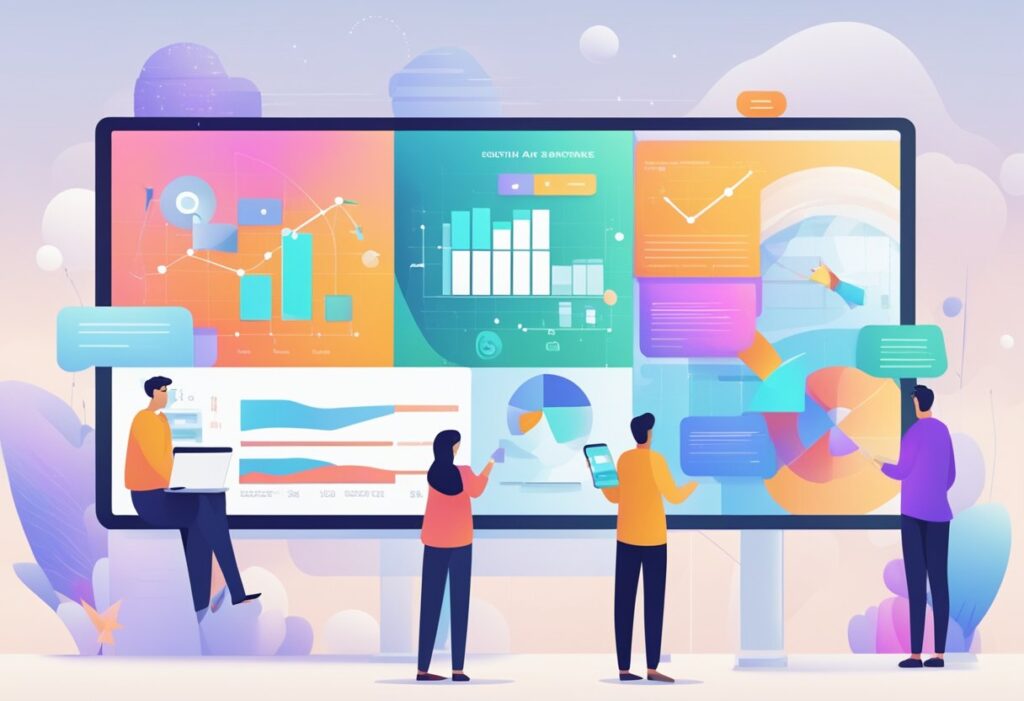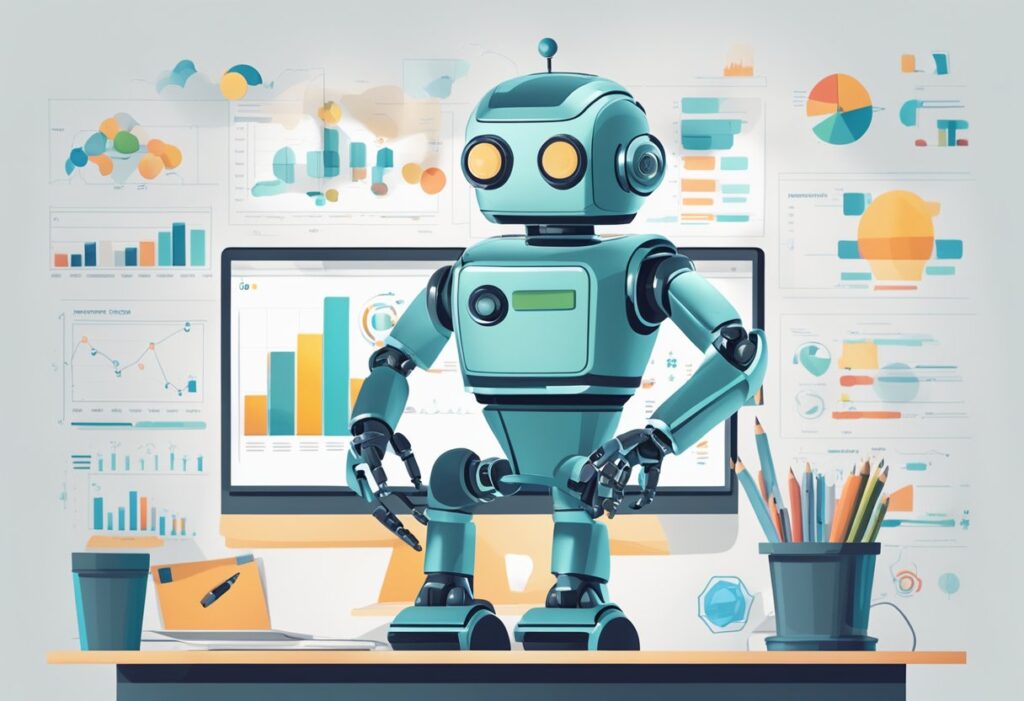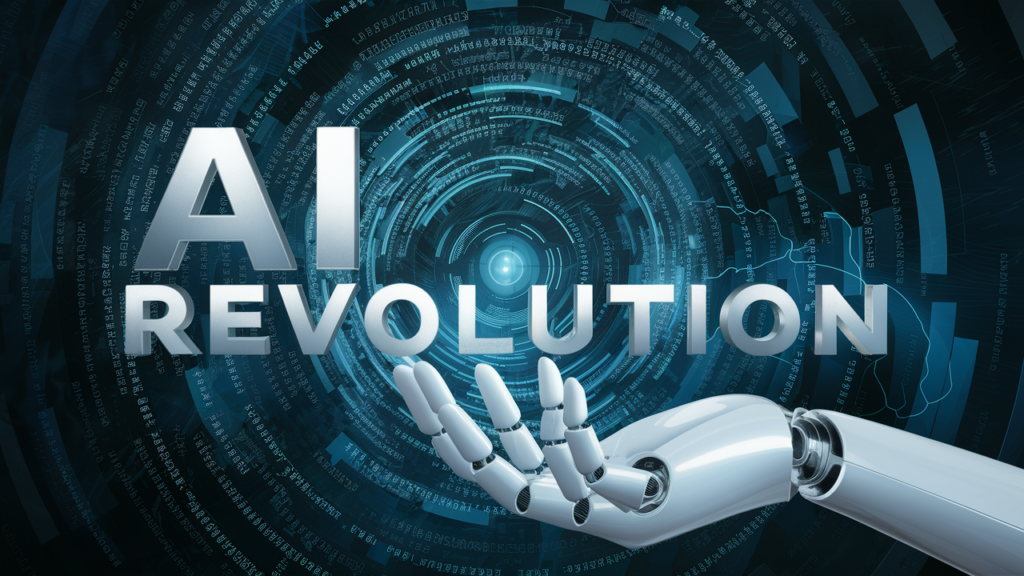Artificial Intelligence (AI) has revolutionized the way businesses operate, and marketing is no exception. AI has become a game-changer in the marketing industry, and its use cases are rapidly expanding. AI is transforming marketing by enabling businesses to analyze vast amounts of data, personalize customer experiences, and optimize marketing campaigns. In this article, we will explore ten AI game-changing marketing use cases that businesses need to know.

One of the most significant benefits of AI in marketing is that it enables businesses to personalize customer experiences. By analyzing customer data, AI can help businesses understand their customers’ preferences and behavior patterns. This information can be used to create personalized marketing campaigns that are tailored to each customer’s needs. Personalized marketing campaigns are more effective than generic campaigns, as they are more likely to resonate with customers and drive conversions.
Another use case of AI in marketing is predictive analytics. Predictive analytics involves using historical data to predict future outcomes. By analyzing customer data, businesses can gain insights into customer behavior and predict future trends. This information can be used to optimize marketing campaigns and make data-driven decisions. Predictive analytics can help businesses identify potential risks and take preemptive action, allocate resources more effectively, and make informed strategic decisions.
Personalized Customer Experiences

Personalization is key to creating a positive customer experience. With the help of AI, marketers can deliver personalized content to each individual customer, resulting in higher engagement and increased loyalty.
Predictive Analytics and Targeting
Predictive analytics uses machine learning models to analyze past data and predict future trends. This can help marketers target their audience more effectively by understanding what their customers are looking for. By using predictive analytics, marketers can deliver personalized messages to each individual customer, increasing the likelihood of conversion.
Dynamic Content Customization
Dynamic content customization allows marketers to create unique experiences for each customer, based on their interests and behaviors. By analyzing customer data, marketers can deliver personalized content in real-time, increasing engagement and conversion rates. Dynamic content customization can take many forms, from personalized product recommendations to customized landing pages.
AI-Driven Customer Insights
AI-driven customer insights provide marketers with a deeper understanding of their customers. By analyzing customer behavior, preferences, and feedback, marketers can create more effective campaigns and improve the customer experience. AI can also help identify patterns and trends that would be difficult to spot manually, allowing marketers to make data-driven decisions.
Overall, personalized customer experiences are essential for creating a positive customer experience. By using AI to deliver personalized content, marketers can increase engagement, loyalty, and ultimately, revenue.
Automated Content Creation

One of the most exciting applications of AI in marketing is automated content creation. With the help of AI, brands can generate high-quality content at scale, saving time and resources.
Natural Language Generation
Natural Language Generation (NLG) is a subset of AI that focuses on generating human-like text. NLG algorithms can analyze existing content and generate new material that aligns with a brand’s voice and messaging. This can range from blog posts and articles to product descriptions and social media updates. NLG can significantly reduce the time and effort required to create content, allowing marketers to focus on other important tasks.
Data-Driven Creative Design
Data-Driven Creative Design (DDCD) is another AI application that can help with content creation. DDCD uses machine learning algorithms to analyze data and generate creative designs that resonate with the target audience. For example, DDCD can analyze customer data to create personalized visual content that is more likely to engage the audience. By using DDCD, brands can create high-quality content that is tailored to the needs and preferences of their customers.
In conclusion, AI-powered automated content creation is a game-changing application of AI in marketing. By using NLG and DDCD, brands can generate high-quality content at scale, saving time and resources.
Programmatic Advertising

Programmatic advertising is a type of digital advertising that uses artificial intelligence (AI) to automate the buying and selling of online ads. It involves the use of algorithms to purchase ad inventory in real-time, allowing advertisers to target specific audiences and optimize their campaigns for maximum performance.
Real-Time Bidding Optimization
Real-time bidding (RTB) is a type of programmatic advertising that allows advertisers to bid on ad inventory in real-time. RTB optimization involves the use of AI algorithms to analyze data and optimize bids for maximum performance. By using RTB optimization, advertisers can ensure that their ads are being shown to the right audience at the right time, resulting in higher click-through rates and conversions.
Ad Performance Analysis
Ad performance analysis involves the use of AI algorithms to analyze data and optimize ad performance. This includes analyzing ad placement, ad format, and ad targeting to determine which ads are performing best and which need to be optimized. By using ad performance analysis, advertisers can ensure that their ads are reaching the right audience and are performing at their best, resulting in higher click-through rates and conversions.
Overall, programmatic advertising is a game-changing technology that is revolutionizing the way that advertisers buy and sell online ads. By using AI algorithms to automate the buying and selling of ad inventory, advertisers can target specific audiences and optimize their campaigns for maximum performance.
Chatbots and Virtual Assistants

Artificial intelligence-powered chatbots and virtual assistants are game-changers in the world of marketing. They provide a cost-effective and efficient way to interact with customers, automate routine tasks, and deliver personalized experiences. Here are two major use cases for chatbots and virtual assistants in marketing.
24/7 Customer Service
One of the most significant benefits of chatbots and virtual assistants is their ability to provide 24/7 customer service. Customers expect prompt and efficient service, and chatbots and virtual assistants can deliver that. They can answer frequently asked questions, provide product information, and even process orders. This ensures that customers have a positive experience and can help increase customer loyalty.
Personalized Recommendations
Chatbots and virtual assistants can also provide personalized recommendations to customers. By analyzing customer data, chatbots and virtual assistants can offer tailored product recommendations based on a customer’s preferences and purchase history. This can help increase sales and customer satisfaction.
In conclusion, chatbots and virtual assistants are powerful tools that can revolutionize the way businesses interact with customers. By providing 24/7 customer service and personalized recommendations, they can help businesses save time and money while increasing customer satisfaction and loyalty.
Email Marketing Optimization

Email marketing is one of the most effective ways to reach out to customers and prospects. However, the success of email marketing campaigns depends on how well they are optimized. Artificial Intelligence (AI) can help optimize email marketing campaigns in several ways.
Automated Campaigns
AI-powered automated email campaigns can take the guesswork out of creating high-performing emails. By analyzing data from past campaigns, AI algorithms can identify patterns and make data-driven recommendations for optimizing email elements such as subject lines, CTAs, and send times. Automated campaigns can also help save time and resources by sending targeted messages to specific segments of the audience.
Segmentation and Personalization
AI can help segment audiences based on their behavior, preferences, and other factors. This allows marketers to send personalized messages that are more likely to resonate with the recipient. Personalized emails have been shown to have higher open rates and click-through rates than generic emails. AI can also help personalize emails by recommending products or services based on the recipient’s past behavior or preferences.
In conclusion, AI can help optimize email marketing campaigns by automating campaigns and personalizing messages. By leveraging AI, marketers can save time and resources while improving the effectiveness of their email marketing campaigns.
Social Media Management

Social media has become an essential part of marketing, and AI has made it easier to manage social media accounts. Here are a few AI-powered social media management use cases to help you manage your social media accounts more efficiently.
Trend Analysis
One of the most significant benefits of AI in social media management is trend analysis. AI algorithms can analyze vast amounts of data from social media platforms and identify trends that can help you create more relevant content. Tools like Audiense can help you analyze social media data and identify trends that can help you create better content.
Influencer Collaboration
Influencer marketing has become a popular marketing strategy, and AI can help you find the right influencers for your brand. AI tools like Predis.ai can help you identify influencers who are a good fit for your brand by analyzing their social media profiles and engagement rates. This can help you save time and effort while finding the right influencers for your brand.
Overall, AI-powered social media management tools can help you manage your social media accounts more efficiently and effectively. By using AI to analyze data and identify trends, you can create more relevant content and engage with your audience more effectively. Additionally, AI can help you find the right influencers for your brand, making influencer marketing more effective.
SEO and Content Strategy
Artificial intelligence (AI) has revolutionized the way businesses approach search engine optimization (SEO) and content strategy. Here are two ways AI can help businesses stay ahead of the curve.

Keyword Analysis
Keyword research is a crucial part of SEO, but it can be time-consuming and tedious. AI-powered tools can help businesses streamline this process by analyzing large amounts of data to identify the most relevant keywords for a particular industry or niche. These tools can also provide insights into search volume, competition, and user intent, allowing businesses to create content that is optimized for specific keywords and phrases.
Content Gap Identification
Identifying content gaps is essential to creating a comprehensive content strategy that addresses the needs of a target audience. AI can help businesses identify content gaps by analyzing existing content and identifying topics that have not been covered or that could be covered more comprehensively. This can help businesses create content that fills gaps in the market and provides value to their target audience.
Overall, AI can help businesses stay ahead of the curve by providing insights into keyword research and content strategy, allowing them to create content that is optimized for search engines and tailored to the needs of their target audience.
Voice and Visual Search

Artificial intelligence has made it possible to optimize marketing strategies for voice and visual search. This has become increasingly important as more people use voice assistants and visual search tools to find products and services. Here are two of the most important ways that AI is changing the game for voice and visual search:
Optimizing for Voice Search
Voice search is becoming more popular as people use voice assistants such as Amazon’s Alexa, Google Home, and Apple’s Siri to find information and make purchases. AI can help optimize content for voice search by analyzing the way people speak and the words they use. This includes identifying common phrases and questions that people use when searching for products and services.
To optimize for voice search, marketers can create content that is conversational and uses natural language. This means using long-tail keywords and phrases that people are likely to use when speaking. Marketers can also use structured data to make it easier for search engines to understand the content and provide relevant results.
Image Recognition for Marketing
Visual search is another area where AI is changing the game for marketers. Image recognition technology can analyze images to identify objects, people, and other elements. This can help marketers create more effective visual content and improve the user experience.
For example, marketers can use image recognition to create personalized recommendations for products based on the images that users upload. This can help increase engagement and improve the user experience. Marketers can also use image recognition to analyze user-generated content and identify trends and patterns.
In conclusion, AI is changing the game for voice and visual search in marketing. By optimizing for voice search and using image recognition technology, marketers can create more effective content and improve the user experience.
Customer Retention

Customer retention is an essential aspect of any business, and AI can help businesses improve customer retention rates. Here are two AI game-changing marketing use cases that can help businesses retain their customers.
Churn Prediction
One of the most significant challenges that businesses face is customer churn. Churn prediction is an AI use case that can help businesses predict which customers are likely to leave, and take steps to prevent it from happening. By analyzing customer behavior, AI models can identify patterns that indicate a customer is at risk of churning. For example, if a customer has not made a purchase in a while or has not engaged with the business in some time, they may be at risk of churning.
Once a business has identified customers who are at risk of churning, they can take steps to prevent it. For example, they can offer personalized promotions or discounts to encourage the customer to make a purchase. Alternatively, they can reach out to the customer with targeted marketing campaigns to re-engage them.
Loyalty Program Personalization
Loyalty programs are an effective way to retain customers, but they need to be personalized to be effective. AI can help businesses personalize their loyalty programs by analyzing customer data and identifying the rewards that are most likely to appeal to each customer. For example, if a customer frequently purchases a particular product, the business can offer them a discount on that product as a loyalty reward.
Personalized loyalty programs can also help businesses identify customers who are at risk of churning. If a customer has not used their loyalty rewards in a while, it may be an indication that they are at risk of churning. By identifying these customers, businesses can take steps to prevent them from leaving, such as offering them a bonus reward or personalized promotion.
Sales Forecasting and Inventory Management
One of the most significant benefits of AI in marketing is its ability to forecast sales and manage inventory. By implementing AI algorithms, businesses can predict future sales more accurately, which can help them optimize inventory levels and improve customer satisfaction.

AI algorithms can analyze historical sales data and use it to identify patterns and trends, which can help businesses predict future sales. This information can be used to optimize inventory levels, ensuring that the right products are in stock at the right time. It can also help businesses avoid stockouts, which can lead to lost sales and dissatisfied customers.
Moreover, AI can help businesses identify which products are likely to sell well in the future. By analyzing customer behavior and preferences, AI algorithms can identify which products are likely to be popular and which are not. This information can be used to optimize inventory levels and ensure that the right products are in stock at the right time.
In addition, AI can help businesses identify which products are likely to be returned. By analyzing customer behavior and purchase history, AI algorithms can identify which products are likely to be returned and why. This information can be used to optimize inventory levels and ensure that the right products are in stock at the right time.
Overall, AI can help businesses optimize inventory levels and improve customer satisfaction by accurately forecasting sales and identifying which products are likely to sell well in the future.
